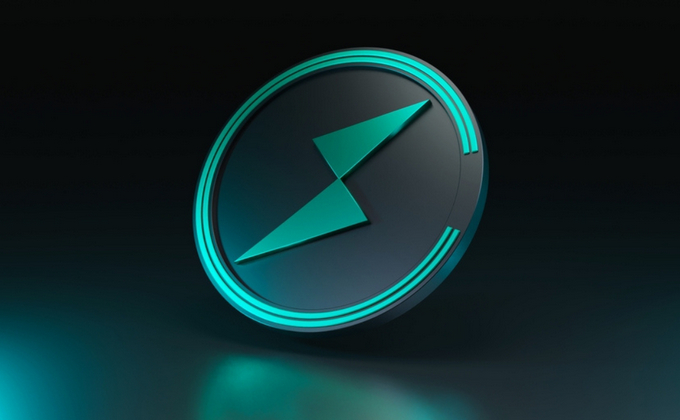-
 Bitcoin
Bitcoin $103,657.7889
0.95% -
 Ethereum
Ethereum $2,650.8710
7.52% -
 XRP
XRP $2.5835
3.49% -
 Tether USDt
Tether USDt $1.0000
-0.01% -
 Solana
Solana $181.7312
5.83% -
 BNB
BNB $659.1325
1.39% -
 USDC
USDC $0.9999
-0.01% -
 Dogecoin
Dogecoin $0.2384
6.27% -
 Cardano
Cardano $0.8209
3.58% -
 TRON
TRON $0.2759
4.99% -
 Sui
Sui $3.9943
0.99% -
 Chainlink
Chainlink $17.2229
4.72% -
 Avalanche
Avalanche $26.0953
7.39% -
 Stellar
Stellar $0.3131
2.75% -
 Shiba Inu
Shiba Inu $0.0...01615
5.51% -
 Hedera
Hedera $0.2141
3.34% -
 Hyperliquid
Hyperliquid $25.8377
5.06% -
 Pi
Pi $1.2008
6.95% -
 Toncoin
Toncoin $3.3850
2.83% -
 UNUS SED LEO
UNUS SED LEO $8.8230
2.66% -
 Polkadot
Polkadot $5.1585
3.60% -
 Bitcoin Cash
Bitcoin Cash $407.4695
2.27% -
 Litecoin
Litecoin $104.7593
1.89% -
 Monero
Monero $341.3347
-0.07% -
 Pepe
Pepe $0.0...01417
4.83% -
 Bitget Token
Bitget Token $4.8448
3.15% -
 Dai
Dai $1.0000
0.00% -
 Ethena USDe
Ethena USDe $1.0005
-0.01% -
 Uniswap
Uniswap $6.8123
2.39% -
 Bittensor
Bittensor $463.3854
1.33%
What is the future of RUNE coin
The native token RUNE is well-positioned to capitalize on trends in decentralized finance, including cross-chain liquidity, native asset support, and Layer-1 scalability.
Nov 10, 2024 at 03:33 am

The Future of RUNE Coin
RUNE, the native token of the THORChain network, has emerged as a promising player in the decentralized finance (DeFi) landscape. As the DeFi industry continues to mature and evolve, RUNE is well-positioned to capitalize on several key trends that will shape its future.
1. Decentralized Cross-Chain Liquidity
One of the core strengths of RUNE is its role in enabling decentralized cross-chain liquidity. Unlike centralized exchanges that hold user funds in custody, THORChain operates as a fully decentralized network, allowing users to swap assets directly between different blockchains without the need for intermediaries. This eliminates custodial risk and provides users with greater control over their funds.
As the demand for cross-chain interoperability grows, RUNE is expected to benefit from increased adoption by users seeking a secure and trustless way to move assets between different blockchains.
2. Native Asset Support
Unlike other DeFi protocols that only support a limited number of assets, THORChain distinguishes itself by offering native support for a wide range of assets. This includes not only major cryptocurrencies like Bitcoin and Ethereum but also a growing number of altcoins and stablecoins.
By allowing users to swap assets directly on-chain, RUNE opens up new possibilities for liquidity providers and traders. It eliminates the need for cross-chain bridges and wrapping or unwrapping assets, reducing the complexity and cost associated with cross-chain transactions.
3. Layer-1 Scalability
One of the challenges facing DeFi is scalability. As the number of users and transactions increases, networks can become congested, leading to slow transaction times and high fees. THORChain addresses scalability by implementing a unique Layer-1 protocol specifically designed for cross-chain trading.
The THORChain network utilizes a multi-chain architecture and a novel consensus mechanism called "Chaos." This allows THORChain to handle a high volume of transactions in a secure and efficient manner, providing a foundation for continued growth and scalability in the future.
4. DAO Governance
RUNE holders play a crucial role in the governance of the THORChain network through a decentralized autonomous organization (DAO). The DAO empowers the community to make decisions on protocol upgrades, treasury management, and other matters affecting the network's development and operation.
This decentralized governance model ensures that RUNE holders have a direct say in the future of the protocol, fostering a sense of ownership and community involvement.
5. DeFi Integrations
The RUNE token is expected to play an important role in the wider DeFi ecosystem as THORChain integrates with other DeFi protocols and services. This could include integration with lending platforms, DEX aggregators, and yield farming platforms, unlocking new use cases for RUNE and providing users with seamless access to a range of DeFi applications.
6. Institutional Adoption
The increasing maturity of the DeFi industry and the growing awareness of cross-chain solutions are attracting the attention of institutional investors. As institutional capital enters the DeFi market, RUNE may benefit from increased adoption by sophisticated traders and investment firms seeking access to decentralized cross-chain liquidity.
7. Native Stablecoin
THORChain is expected to launch its own native stablecoin, known as THOR Stablecoin (TSC), in the near future. This will provide THORChain with a stable asset for liquidity provision, cross-chain trading, and other financial applications.
The introduction of TSC is likely to further enhance the ecosystem's functionality and contribute to the overall stability of the THORChain network.
8. Partner Network
THORChain has established partnerships with several leading players in the blockchain industry, including Binance, Terra, and Trust Wallet. These partnerships provide THORChain with access to a wider user base, liquidity, and development resources.
By fostering a collaborative approach, THORChain can leverage the expertise and infrastructure of its partners to accelerate its growth and expand its reach in the DeFi market.
Disclaimer:info@kdj.com
The information provided is not trading advice. kdj.com does not assume any responsibility for any investments made based on the information provided in this article. Cryptocurrencies are highly volatile and it is highly recommended that you invest with caution after thorough research!
If you believe that the content used on this website infringes your copyright, please contact us immediately (info@kdj.com) and we will delete it promptly.
- Aptos (APT) Attempts to Rise Above $99,000 But Fails. What do experts say about this situation?
- 2025-05-14 16:05:14
- HUMO Token: Uzbekistan Launches a Pilot Project for a State-Sponsored Digital Currency
- 2025-05-14 16:05:14
- XRP, Kaspa and Solana (SOL) Are Poised to Lead the Next Altcoin Bull Cycle: Analysis
- 2025-05-14 16:00:47
- $TRUMP Meme Coin: Promises of Dinner with Donald Trump Lure Investors
- 2025-05-14 16:00:47
- The Next Big Meme Coin is Already Brewing: BTFD Coin (BTFD) Promises 8900% ROI
- 2025-05-14 15:55:13
- Jakarta, Pintu News – The price of 24-carat gold bars (Antam) today, May 14, 2025, recorded another increase.
- 2025-05-14 15:55:13
Related knowledge

What is Ethereum’s Slashing mechanism and how to punish malicious behavior?
Feb 20,2025 at 03:08am
Key PointsOverview of slashingDifferent types of slashing in EthereumIncentives and consequences of slashingIdentifying and reporting slashed validatorsOngoing discussions and potential improvementsEthereum's Slashing Mechanism: Punishing Malicious BehaviorEthereum's slashing mechanism is an essential tool for ensuring network security and punishing mal...

What is the verifier node of Ethereum and how to become a verifier?
Feb 19,2025 at 06:00pm
The Verifier Node of Ethereum: A Comprehensive GuideKey Points:What is a Verifier Node?How to Become a Verifier NodeResponsibilities and Rewards of a Verifier NodeMinimum Requirements for Becoming a Verifier NodePotential Difficulties in Running a Verifier Node1. What is a Verifier Node?A Verifier Node is an independent entity on the Ethereum network th...

What is Ethereum’s staking, and how to participate and earn money?
Feb 19,2025 at 04:37pm
Key Points:Understanding Ethereum's Staking MechanismSteps to Participate in StakingBenefits and Rewards of StakingSecurity and Risk ConsiderationsTechnical Requirements and Hardware OptionsPotential Challenges and Troubleshooting TipsFAQs on Ethereum StakingWhat is Ethereum's Staking?Proof-of-Stake (PoS) is a consensus mechanism used in blockchain netw...

What is Ethereum’s DAO (Decentralized Autonomous Organization) and how does it work?
Feb 20,2025 at 03:12am
Key PointsDefinition and Structure of a DAOGovernance and Decision-Making in DAOsBenefits and Use Cases of DAOsChallenges and Limitations of DAOsWhat is Ethereum's DAO (Decentralized Autonomous Organization) and How Does It Work?Definition and Structure of a DAOA Decentralized Autonomous Organization (DAO) is an innovative governance and management fram...

What is Ethereum's multi-signature wallet and how to improve security?
Feb 20,2025 at 02:18pm
Key Points:Understanding the Concept of a Multi-Signature WalletBenefits and Drawbacks of Multisig WalletsRequirements for Setting Up a Multisig WalletStep-by-Step Guide to Generating a Multisig WalletImplementing Strategies for Enhanced Security1. Understanding the Concept of a Multi-Signature WalletA multi-signature (multisig) wallet in the Ethereum e...

What is Ethereum's oracle and how to provide data for smart contracts?
Feb 21,2025 at 01:30am
Key Points:Understanding the concept of oracles in EthereumExploring different types of oraclesDetailed guide on how to provide data for smart contractsAddressing potential challenges and considerationsWhat is Ethereum's Oracle?Oracles are crucial components in the Ethereum ecosystem, enabling smart contracts to access real-world data and off-chain even...

What is Ethereum’s Slashing mechanism and how to punish malicious behavior?
Feb 20,2025 at 03:08am
Key PointsOverview of slashingDifferent types of slashing in EthereumIncentives and consequences of slashingIdentifying and reporting slashed validatorsOngoing discussions and potential improvementsEthereum's Slashing Mechanism: Punishing Malicious BehaviorEthereum's slashing mechanism is an essential tool for ensuring network security and punishing mal...

What is the verifier node of Ethereum and how to become a verifier?
Feb 19,2025 at 06:00pm
The Verifier Node of Ethereum: A Comprehensive GuideKey Points:What is a Verifier Node?How to Become a Verifier NodeResponsibilities and Rewards of a Verifier NodeMinimum Requirements for Becoming a Verifier NodePotential Difficulties in Running a Verifier Node1. What is a Verifier Node?A Verifier Node is an independent entity on the Ethereum network th...

What is Ethereum’s staking, and how to participate and earn money?
Feb 19,2025 at 04:37pm
Key Points:Understanding Ethereum's Staking MechanismSteps to Participate in StakingBenefits and Rewards of StakingSecurity and Risk ConsiderationsTechnical Requirements and Hardware OptionsPotential Challenges and Troubleshooting TipsFAQs on Ethereum StakingWhat is Ethereum's Staking?Proof-of-Stake (PoS) is a consensus mechanism used in blockchain netw...

What is Ethereum’s DAO (Decentralized Autonomous Organization) and how does it work?
Feb 20,2025 at 03:12am
Key PointsDefinition and Structure of a DAOGovernance and Decision-Making in DAOsBenefits and Use Cases of DAOsChallenges and Limitations of DAOsWhat is Ethereum's DAO (Decentralized Autonomous Organization) and How Does It Work?Definition and Structure of a DAOA Decentralized Autonomous Organization (DAO) is an innovative governance and management fram...

What is Ethereum's multi-signature wallet and how to improve security?
Feb 20,2025 at 02:18pm
Key Points:Understanding the Concept of a Multi-Signature WalletBenefits and Drawbacks of Multisig WalletsRequirements for Setting Up a Multisig WalletStep-by-Step Guide to Generating a Multisig WalletImplementing Strategies for Enhanced Security1. Understanding the Concept of a Multi-Signature WalletA multi-signature (multisig) wallet in the Ethereum e...

What is Ethereum's oracle and how to provide data for smart contracts?
Feb 21,2025 at 01:30am
Key Points:Understanding the concept of oracles in EthereumExploring different types of oraclesDetailed guide on how to provide data for smart contractsAddressing potential challenges and considerationsWhat is Ethereum's Oracle?Oracles are crucial components in the Ethereum ecosystem, enabling smart contracts to access real-world data and off-chain even...
See all articles



















![[Market 5.13] BTC continues to play music and dance? #btc #ETH #sol #doge [Market 5.13] BTC continues to play music and dance? #btc #ETH #sol #doge](/uploads/2025/05/14/cryptocurrencies-news/videos/market-btc-continues-play-music-dance-btc-eth-sol-doge/image_500_375.webp)




![[Ronnie Trading Guide]-2025.5.14-Notice: Bitcoin will test the previous high soon~ wait and see~ [Ronnie Trading Guide]-2025.5.14-Notice: Bitcoin will test the previous high soon~ wait and see~](/uploads/2025/05/14/cryptocurrencies-news/videos/ronnie-trading-guidenotice-bitcoin-test-previous-wait/image_500_375.webp)





























































